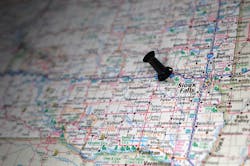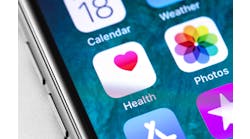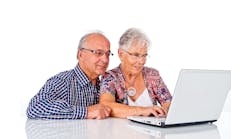Sanford Health Rolls Out ‘OurNotes’ Phase of OpenNotes
The OpenNotes movement is rapidly spreading across the country, with more than 40 million U.S. patients now having access to their clinicians’ notes. In April, South Dakota-based Sanford Health launched the first systemwide implementation of the next phase of the project called “OurNotes,” which allows patients to be involved in co-producing notes with their clinicians.
Headquartered in Sioux Falls, S.D., Sanford Health has 44 hospitals and 1,400 physicians. In a recent interview, Heidi Twedt, M.D., chief medical information officer, said the organization had a fairly long history of patient engagement and being open with patients about their information. “We were ahead of the curve when it came to lab and radiology results release more than five years ago,” she said. In 2015 Twedt and Chief Medical Officer Allison Suttle, M.D., first heard about OpenNotes and decided Sanford should be at the forefront of the movement.
“We started our pilot late in 2015 and went live with sharing all clinical notes, including notes from nurses, therapists, chiropractors — every clinical note — over the course of 2016,” Twedt said. “We were among the first in sharing the notes of clinicians such as genetic counselors and physical therapists.”
Clinician notes are shared in Sanford’s Epic-based patient portal. The readership numbers are in the 10 percent range. “Some of our specialties such as cardiology or oncology have readership rates in the 30 to 40 percent range, while primary care is lower,” she said. With care that is more complex, there is a lot to digest in the appointment, so patients often go back and read it to make sure they understood all the details. They also are more likely to be reading notes in preparation for the next visit.
Although there was some anxiety among clinicians about the change, she said, “by and large our physicians understood the goals of patient engagement and satisfaction, and better communication. Our history of being at the forefront of releasing lab and radiology results probably helped with that mindset.”
Implementing OurNotes
So how is OurNotes different from OpenNotes? Twedt said Sanford’s version of OurNotes is allowing patients to help contribute to the note before the appointment even starts. As they do electronic check-in for their upcoming appointment, they are asked two questions: What has happened since your last visit? And what would you like to talk about during your visit? “We want to get an update on the patient, and we left it fairly open-ended, so that it could be an update on their medical conditions or personal life or whatever updates they want to share, and the other is agenda setting for the upcoming appointment,” Twedt said. “We do team-based care. So the providers are able to see the answers to help with agenda-setting for the appointment. The provider can pull what the patient wrote into their note and use it to help compose their note if applicable.”
This is proving valuable for a couple of reasons, she added. “I think providers can get in the mindset that you are coming in for a diabetes follow-up appointment because that is why we scheduled the appointment. But maybe something has happened in your life or there is something else that is a more pressing issue for the patient. This allows the provider to pause for a moment and ask what the patient wants to get out of the visit to make sure we are fulfilling their needs for the visit as well.”
Sanford went live with OurNotes on April 28. “We actually were bold and did not pilot it,” Twedt said. We went live in every specialty and every clinic type all on one day: April 28. Since then, they have tracked the things that are easy to track: The percent of the time the patients answer the questions. “Right now we are running at around 13 percent. If you do electronic check-in, you have to answer those questions to complete it,” she explained. “The participation rate is really just mirroring our e-check-in, which was around 7 percent systemwide and went much higher during COVID because it was mandatory to do e-check-in to do a telehealth visit, so we had a surge and now it has plateaued a bit. Since April 28, we have had almost 40,000 patients submit answers to these questions.”
Sanford already has done a little analysis on how the providers are using the data. “Our sense is that about 50 percent of the time the patient just gives us the chief complaint information. The other half of the time, they are giving us what we would call history of present illness – more of a story,” she said. “We have had a few instances when the patient gave us very valuable information – for instance, they had been admitted at another hospital since we last saw them. Knowing that ahead of time gives us time to make sure we have the records from that visit that happened elsewhere.”
Twedt is hoping that if providers and patients find it helpful, they will encourage each other to engage in the process. “The providers will encourage the patients to fill this out, and the patients will encourage providers to read it and meaningfully interact with it. We are hoping we can get that positive feedback loop going.”
Twedt said a few other health systems have done some pilots with OurNotes, including the University of Colorado. The Beth Israel Deaconess Medical Center has a FAQ page about its deployment of OurNotes.


